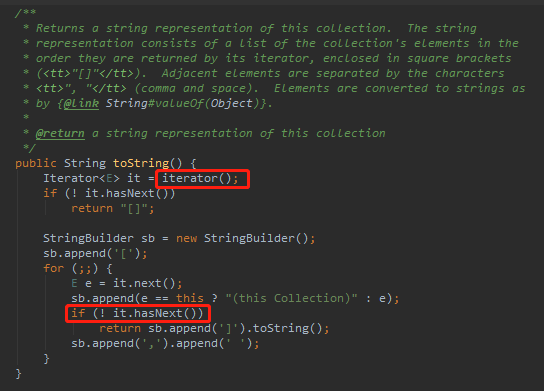在分析源码ArrayList.remove()时,偶然发现了一个疑惑的点,就是:源码也是将最后一个对象的引用指向null(源码:elementData[--size] = null; // clear to let GC do its work),而使用 list.set(最大下标,null)同样也是将对象的引用指向null,为什么输出的结果为:remove()方法 对应位置的值会被“删除”,set()方法 下标位置的值依然被保留、输出。这是为什么呢?
首先我们先看一下remove()方法的源码,这里只讲通过下标删除。
/** * Removes the element at the specified position in this list. * Shifts any subsequent elements to the left (subtracts one from their * indices). * * @param index the index of the element to be removed * @return the element that was removed from the list * @throws IndexOutOfBoundsException {@inheritDoc} */ public E remove(int index) { // 检查下标是否越界 rangeCheck(index); // 记录修改次数,这里就是foreach、Iterator遍历时不能执行删除的根本原因 modCount++; E oldValue = elementData(index); int numMoved = size - index - 1; if (numMoved > 0) // 系统内置的数据复制,浅复制。什么是浅复制这里就不做扩展了 System.arraycopy(elementData, index+1, elementData, index, numMoved); // 重点来了,本次探讨的问题 elementData[--size] = null; // clear to let GC do its work return oldValue; }
这里我准备了一个事例用来分析,如下:
@Test public void Test1() { String[] array = {"1111","2222","3333","4444","5555"}; List<String> setList = new ArrayList<>(Arrays.asList(array)); List<String> removeList = new ArrayList<>(setList); setList.set(4, null); removeList.remove(4); System.out.println(setList); System.out.println(removeList); }
输入结果:

通过分析查找资料,终于发现了问题出在哪了,原来源码中的 --size 就是造成两种结果的原因,下面给出解析:
1:首先要明白一个道理,数据存储在内存中是连续的。
其次,集合在 AbstractCollection 重写了toString方法,可以看到 arrayList 是通过迭代器遍历输出的。

2:ArrayList实现了 iterator() 方法,返回一个实现 Iterator<E> 的内部类 Itr ,其中 hasNext() 方法 决定了只返回size大小的数据,而size 正是arrayList的大小。

现在,知道为什么输出的结果会是上面看到的样子了吧。其实,上面两种方式生成的数组,存储在内存中是一样的,都是最后一个对象的引用指向null,只是 remove()方法 改变了记录数组的size大小。